1. Acheson D. Independent Inquiry into Inequalities in Health. London, UK: The Stationery Office;1998.
2. Breslow L, Enstrom JE. Persistence of health habits and their relationship to mortality. Prev Med. 1980; 9(4):469–483. PMID:
7403016.

3. Belloc NB, Breslow L. Relationship of physical health status and health practices. Prev Med. 1972; 1(3):409–421. PMID:
5085007.

4. Brownson RC, Remingron PL, Davis JR. Chronic disease epidemiology and control. Washington, D.C.: American Public Health Association;1993.
5. World Health Organization. WHO Global NCD Action Plan 2013-2020. Geneva, Switzerland: World Health Organization;2013.
8. Korea Centers for Disease Control & Prevention. Chronic Disease Status and Issue 2018. Cheongju, Korea: Korea Centers for Disease Control & Prevention;2018.
9. WHO Global NCD Action Plan. 2013-2020. World Health Organization;2013.
11. Busse R. Disease management programs in Germany's statutory health insurance system. Health Aff (Millwood). 2004; 23(3):56–67.

12. Pekka P, Erkki V, Tiina L, Pekka J, Meri P. The North Karelia Project: from North Karelia to National Action. Helsinki, Finland: National Institute for Health and Welfare (THL);2009.
13. Yang HG, Lee DH. Achievements and challenges in a community based registration and management programme for hypertension and diabetes. Public Health Wkly Rep. 2015; 8(35):827–834.
14. Yoon SJ. The Development of Model for Efficient Management of Hypertensive Patients and Diabetics. Cheongju, Korea: Korea Centers for Disease Control and Prevention;2013.
15. Lee HM, Kim YM, Lee CH, Shin JH, Kim MK, Choi BY. Awareness, treatment and control of hypertension and related factors in the jurisdictional areas of primary health care posts in a rural community of Korea. J Prev Med Public Health. 2011; 44(2):74–83. PMID:
21483226.

16. Macías I, del Collado F, Forte G. The effect of a community hypertension control program. Hypertension. 1988; 11(2 Pt 2):I194–7. PMID:
3346057.

17. Cho WS. The related of continuity of hospitalization and the medication adherence and health result for new patient with hypertension [master's thesis]. Seoul, Korea: Korea University;2010. p. 45–46.
18. Park CM, Jang SM, Jang SH, Lee HJ. Analysis of Medical Costs and Health Outcomes Associated with Continuity of Care. Seoul, Korea: Health Insurance Review & Assessment Service;2010. p. 133–134.
19. Sokol MC, McGuigan KA, Verbrugge RR, Epstein RS. Impact of medication adherence on hospitalization risk and healthcare cost. Med Care. 2005; 43(6):521–530. PMID:
15908846.

20. Lim SM, Park YH, Jhang WG, Kim YT, Ahn EM, Kim GH, et al. Evaluation of community-based hypertension control programme in South Korea. Ann Acad Med Singapore. 2018; 47(4):143–148. PMID:
29777244.
21. Knowler WC, Barrett-Connor E, Fowler SE, Hamman RF, Lachin JM, Walker EA, et al. Reduction in the incidence of type 2 diabetes with lifestyle intervention or metformin. N Engl J Med. 2002; 346(6):393–403. PMID:
11832527.

22. Stock S, Drabik A, Büscher G, Graf C, Ullrich W, Gerber A, et al. German diabetes management programs improve quality of care and curb costs. Health Aff (Millwood). 2010; 29(12):2197–2205. PMID:
21134920.

23. Rönnback M, Isomaa B, Fagerudd J, Forsblom C, Groop PH, Tuomi T, et al. Complex relationship between blood pressure and mortality in type 2 diabetic patients: a follow-up of the Botnia Study. Hypertension. 2006; 47(2):168–173. PMID:
16380522.
24. Hakala SM, Tilvis RS, Strandberg TE. Blood pressure and mortality in an older population. A 5-year follow-up of the Helsinki Ageing Study. Eur Heart J. 1997; 18(6):1019–1023. PMID:
9183596.

25. Guo Z, Viitanen M, Winblad B. Low blood pressure and five-year mortality in a Stockholm cohort of the very old: possible confounding by cognitive impairment and other factors. Am J Public Health. 1997; 87(4):623–628. PMID:
9146442.

26. Kim MH, Jeong YW, Lee DH. Cardiovascular diseases prevention and control campaign, 2015. Public Health Wkly Rep. 2015; 8:925–928.
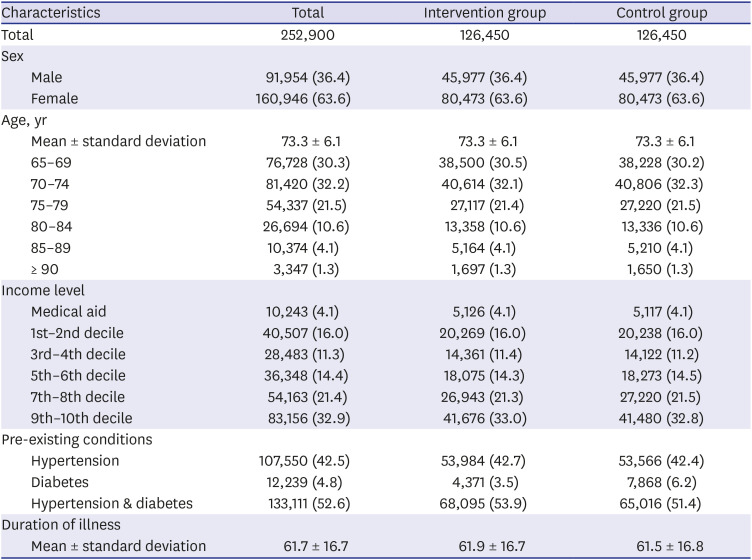

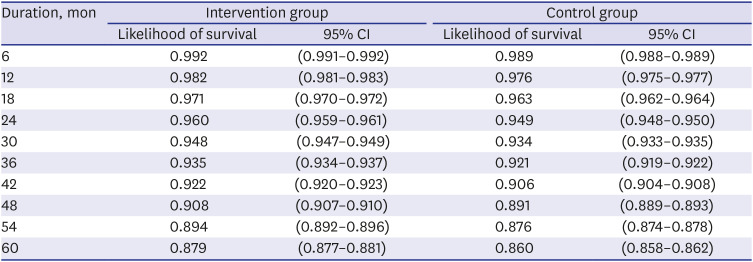
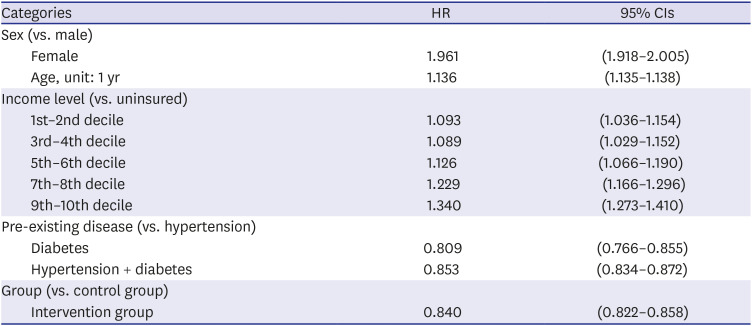




 PDF
PDF Citation
Citation Print
Print



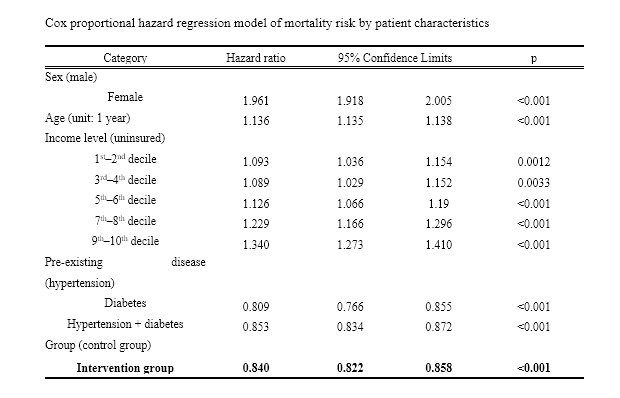
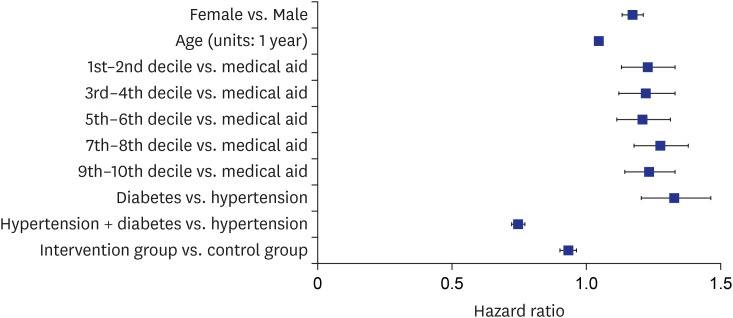
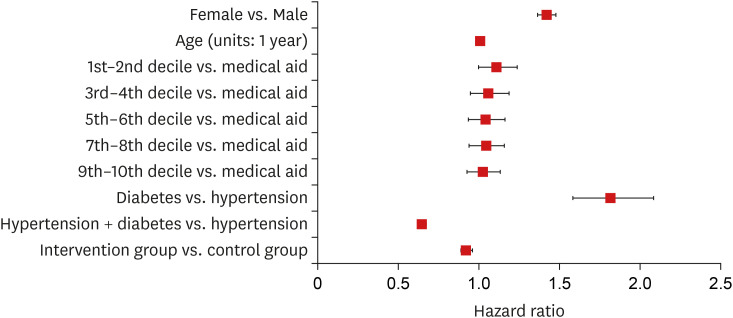
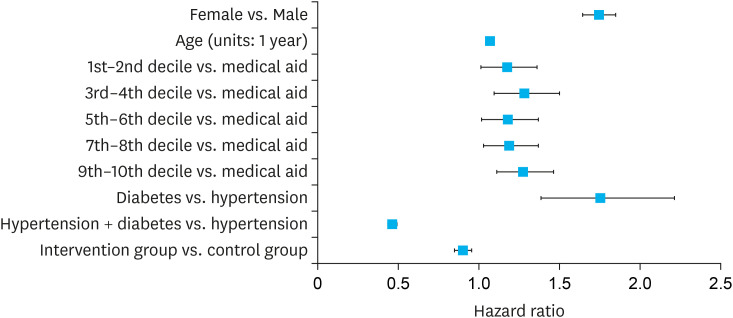
 XML Download
XML Download